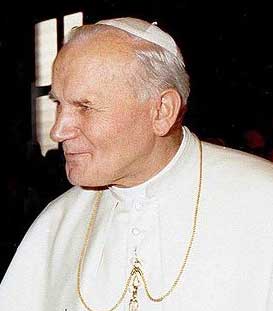1981 Assasination Attempt on Pope

Pope Paul 1980
On May 13, 1981 Mehmet Ali Ağca shot Pope Paul II twice as he entered St Peters Square. Ago who was Turkish was sent by the Bulgarian intelligence services. the Pope was struck by four bullets but they were not life threatening and the Pope recovered. Ağca was quickly captured and eventually sentenced to life in prison. He was pardoned in 2000 at the request of the Pope, but spent additional years in a Turkish jail. It is widely believed that the Soviets were behind the assassination, fearing the Popes impact on Eastern Europe.
On May 13, 1981, Pope John Paul II was shot and critically wounded in St. Peter's Square in Vatican City by a Turkish assassin named Mehmet Ali Ağca. The pope was shot four times at close range, and one of the bullets narrowly missed his heart.
The shooting occurred during the pope's weekly public audience, which drew a large crowd of people to St. Peter's Square. Ağca approached the pope and fired several shots before being subdued by members of the crowd and the Swiss Guard.
The pope was rushed to a nearby hospital, where he underwent emergency surgery. Despite the severity of his injuries, the pope made a fast recovery and returned to the Vatican just a few weeks later.
The assassination attempt raised questions about the security of the pope and the Vatican. Ağca was later apprehended, tried, and sentenced to life in prison. He claimed that he acted alone, but many theories have been put forward about who might have been behind the assassination attempt.
In the aftermath of the shooting, Pope John Paul II became even more popular and respected around the world. He publicly forgave Ağca for the assassination attempt and visited him in prison in 1983. The incident also led to increased security measures at the Vatican and for the pope's public appearances.
 >
>